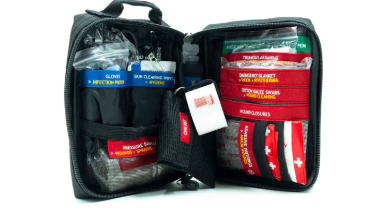Understand How To Make Medical Bills in Your Clinic

Medical billing encompasses the coding and billing services rendered, allowing the financial flow to be efficient, sustainable, and always under management control.
With the increasing complexity of the healthcare environment, efficiency in billing medical bills has become a critical aspect of medical clinics’ sustainability.
Billing procedures go far beyond simply charging for services rendered. On the contrary, they encompass a complete flow of interconnected processes, ranging from the patient’s admission to the actual receipt of payment.
When discussing medical bills, we are dealing with the clinic’s financial heart. Therefore, neglecting this area comprises the institution’s future.
We know that managing a clinic is a huge challenge and that details make all the difference. Therefore, it is important that you, as a manager, are familiar with all the processes that are involved in your company, in particular invoicing.
How about investing a few minutes of your time to improve the financial health of your clinic?
Continue reading this article and learn more about how to optimize medical billing.
What is medical billing?
Medical billing refers to healthcare providers for services. For example, when you see a patient through a health insurance plan, you must bill for that consultation later.
Also known as medical guide billing and health insurance billing, this process ensures your clinic’s financial health.
This charge typically occurs after the consultation, examination, or other procedures have been performed at the clinic.
Since this is the main activity of the healthcare establishment, good management of this process is crucial for the company’s long-term sustainability.
How important is medical billing?
Correctly billing medical bills is essential, as this factor is directly related to the revenue generated by the healthcare establishment.
Inefficient billing can lead to errors and healthcare providers rejecting invoices. This can lead to significant revenue losses or deferred receivables, compromising cash flow.
Insurance companies rely on healthcare professionals and facilities that provide health insurance services to patients, but they are not concerned about whether or not you get paid.
It is no wonder that glosses are so typical, and contesting them is highly bureaucratic.
Medical glosses occur when the health plan does not pay for a service provided or pays only partially due to an error, such as information incompatibility.
If the patient’s card number was entered incorrectly, this is already a reason you did not receive payment.
Not being paid for a service you have already provided or received less than expected can be fatal for your clinic’s finances, leading to drastic scenarios such as bankruptcy.
When health insurance makes up a significant portion of your income, billing becomes essential in your professional life.
Knowing and applying best laboratory billing solutions practices and investing in training and technology can significantly improve your bottom line. Remember: a good medical billing process is an investment in the maintenance of your business.
4 tips for making good medical billing
1. Train reception staff
Reception professionals are responsible for registering the patient’s data, such as the card number and which procedure was performed.
In some clinics, receptionists are responsible for requesting patients’ signatures, explaining how exam referrals work, and providing guidance.
In other words, the chances of glosses are high if any information is filled in with a typing error or a vital guideline is forgotten.
It is therefore necessary to train the receptionists, the secretaries and the entire team of the clinic in the importance of invoicing and how to avoid errors.
2. Review billing data daily
Checking whether the information on the tabs is correct can be tiring, especially if you let days or weeks of documents accumulate.
Ideally, a professional should be in charge of reviewing the procedures performed at the end of the day or starting the morning by conducting this review.
You can appoint a secretary or receptionist to take on this responsibility.
Learn how to manage other clinic finances with our free spreadsheet:
3. Have a system for Wise Medical Billing
Medical billing involves several steps:
- Generation of the guide for each service;
- Review of guide information;
- Closing of the batch of guides for a given period;
- Sending to the agreement;
- Hiatus (waiting for the processing of information sent to the health plan );
- Payment or gloss.
A Wise Medical Billing system simplifies your financial management, optimizes your time, increases the clinic’s revenue, and eliminates medical glosses.
A Wise Medical Billing system automates the issuance of guides required by operators and has other tools that eliminate recurring errors, such as patient registration and electronic medical records.
When choosing medical software with Wise Medical Billing, you can have all the solutions you need on a single platform, which increases your data intelligence and simplifies your routine.
4. Pay attention to the deadline for sending invoices
The delivery time varies according to each health plan. Some prefer to be sent biweekly, while others prefer to be sent monthly.
Regardless of the final submission date, health insurance companies usually ask that the file format be XML and sent via medical software or the operator’s website.
You must not miss this deadline and permanently save a digital copy in your system to contest a gloss or make corrections to ensure the XML file is accepted.
Read Also: Sensors in Adelaide: Advanced CO2 Monitoring for Health and Safety
How do we avoid glosses and impacts on billing?
Glosses are rejections or reductions of the amounts charged on the invoice sent to the health insurance company.
Glosses can occur for many reasons, such as:
- Coding errors in the procedures performed;
- Lack of prior authorization to carry out specific procedures;
- Inconsistencies in patient or physician information;
- Delay in sending invoices.
Disclaimers are a direct threat to the billing of medical bills, as they jeopardise the income of the clinic. Furthermore, recovery of sums due from the disbursement may be tedious and time-consuming, which damages the relationship between the contract and its services. It is therefore important to minimise the risk and occurrence of delays in your establishment. To do this, you can adopt the following strategies:Use effective triage when admitting patients: this ensures that all information needed for care and billing is accurate and complete.;
- Invest in team training: regular training and updates on billing and coding rules can prevent errors that lead to glosses;
- Adopt management technology: management software can automate processes, reduce human errors, and speed up billing. Another advantage that the system for clinics can have is the generation of Wise Medical Billing consultation guides in batches. This tool makes sending to health insurance plans easier and saves time for the medical team.
Perform regular financial audits. Audits enable you to detect and correct revenue cycle management errors before they lead to a refusal. The use of a basic medical billing analyst can be a result oriented strategy in this process. This expert, who has expertise in this field, will be able to devote his or her time and expertise to ensuring the progressive and effectiveness of the billing process, which will participate in the financial sustainability of the clinic.





